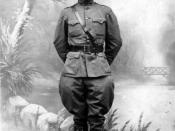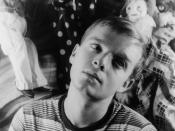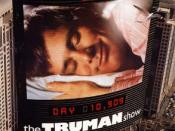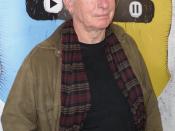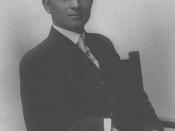Film texts tell stories using words as well as other elements. Explore the way images have been used to create the narrative in The Truman Show.
The narrative structure of The Truman Show is very multifaceted. The story moves between three different worlds and is not presented in straight chronological order. The director Peter Weir and the writer Andrew Niccol, have made extensive use of visual language to convey some ideas and commentary about the role and power of the media in modern society. The character of Truman appeals to our emotions and understanding of his metaphorical significance, which is essentially a result of the way images have been constructed to create meaning.
The three worlds in which the story takes place are Seahaven, Christof's control room (also known as the lunar room) and the viewing public of the program. These three worlds rely on each other for survival, they have a symbolic relationship.
Truman's world and Christof's world are conflicting with each other, which is only resolved at the film's end when direct communication between the two occurs, and the viewers world is kept completely separate.
The film establishes the manufactured and limited nature of Seahaven using a mixture of sound and image. An opening shot of the sun rising over the island shows us a neat, white, dormitory town with delineated boundaries. The emphasis of the twittering birds is like shorthand for a "ÃÂpleasant and natural environment', but the irony of this is that in fact this environment was neither of those. As Truman emerges from his house we are impressed by the cleanliness of his character and of his setting. The high-key lighting accentuates what a sunny day it is but also shows a feeling of honesty and innocence in Truman.
A very important image we are given of Truman's world is that which framed by oval and circular mattes to indicate that this world is being filmed through hidden cameras and this is the way the "ÃÂviewing public' is also seeing it. The fact that Truman is unaware that he is being filmed puts the audience pretty much in the position of peeping toms. We are watching the private actions of someone else from a hidden position. This raises another of the films major concerns, the exploitation of individuals by the media and the involvement of the audience in that exploitation.
Christof is located in the lunar room, he is the director and creator of the character Truman and the show. The lighting and colour used for Christof's world helps us to distinguish it from Truman's. The lunar room is a shadowy place, the dark and colourless setting is associated with evil intent, it is a metaphor for what the film suggests is the negative role of television in society. We get a general impression that the lunar room in a television control room, but we not show the full extent of this world. We are left wondering what else lies beyond our view, especially in the scene where Christof is prepared for bed and this leaves us with the idea that perhaps he spends his entire life in the place.
Christof's costuming is an element in his construction as an ambiguous character. He is almost always seen wearing a beret, an item of clothing traditionally associated with the artist. We cannot condone what Christof has done to Truman but we can also see that he has a genuine affection for him and cannot be interpreted as an absolute villain.
The world of the viewing public is included as brief episodes punctuating the main narrative. The characters in these scenes are used to view and comment but not to participate. In creating the image of the viewer in this way the director emphasises the role of the viewing public in what is presented on television. Through the characterisation of the three worlds we are able to see where the power of media lies and how it is not only the producer of the media product who is responsible if someone is exploited, but the viewing public as well.
Through the use of a range of film techniques such as framing, lighting, costumes, and the editing together of different shot types, Peter Weir has put together a narrative which sends its message through the use of images just as much as other forms of communication. The Truman Show is an example of how ideas can be explored through narrative and how stories can be tole through images.
